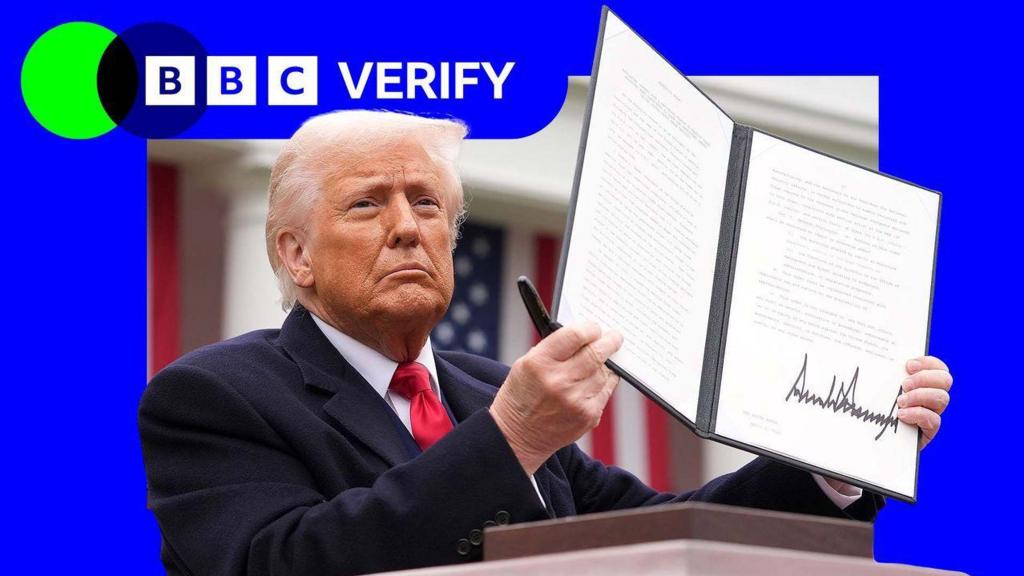The US Court of International Trade delivered a significant ruling on Wednesday, invalidating President Trump’s tariffs imposed under the International Emergency Economic Powers Act (IEEPA) of 1977. The court determined that IEEPA did not grant the president the authority to implement these specific tariffs.
This decision directly impacts the “fentanyl” tariffs levied on Canada, Mexico, and China, aimed at curbing the flow of narcotics into the US. It also affects the “Liberation Day” tariffs announced on April 2nd, including the broad 10% tariff on all US imports.
However, the ruling does not affect the Trump administration’s 25% tariffs on steel and aluminum, or the 25% additional tariffs on automobiles and auto parts, as these were implemented under different legal justifications.
A temporary reprieve arrived Thursday night, as a US federal appeals court granted a stay on the global tariffs pending review of the White House’s appeal. Nevertheless, the future of the President’s tariff policy remains uncertain.
Data from US Customs reveals revenue collected under various tariffs during the 2025 fiscal year (October 1, 2024 – April 30, 2025), offering insight into the impact of the court’s decision.
The IEEPA-based fentanyl tariffs generated $11.8 billion since February 2025, while the April reciprocal tariffs yielded $1.2 billion. In contrast, tariffs on metals and auto parts (unaffected by the ruling) brought in approximately $3.3 billion.
The largest revenue source stemmed from pre-existing tariffs on China, totaling $23.4 billion. These tariffs, implemented during Trump’s first term and under different legal authority, remain unaffected by the court ruling.
While this data represents past revenue, the nullified tariffs were projected to generate significantly more revenue annually. Goldman Sachs analysts estimated potential annual revenue of nearly $200 billion.
Capital Economics estimates the ruling will lower the US’s average external tariff from 15% to 6.5%, still significantly higher than the 2.5% level of 2024 and the highest since 1970 (15% would have been the highest since the late 1930s).
Trump previously leveraged these tariffs in negotiations. Analysts suggest this ruling may discourage countries from quickly seeking deals with the US.
The European Union (EU) accelerated negotiations with the White House after Trump threatened a 50% tariff increase. The EU, along with Japan and Australia, might now favor awaiting the outcome of the appeal before making concessions.
Initial market reactions were positive, but uncertainty remains. Some analysts suggest Trump might attempt to reimpose tariffs under Section 301 of the 1974 Trade Act, or through other sectoral tariffs.
The World Trade Organization (WTO) recently reported a “sharp deterioration” in global trade outlook due to Trump’s tariffs, predicting a 0.2% decline in global merchandise trade for 2025.
While the ruling could improve trade performance, uncertainty regarding future US tariffs persists. Many economists anticipate significant negative impacts on trade this year.
Grace Fan of TS Lombard concludes, “Trump’s trade war is not over – not by a long shot.”
What do you want BBC Verify to investigate?
The tech billionaire and Doge have spearheaded dramatic changes in the US government and Washington.
The deportations follows Donald Trump’s crackdown on undocumented migrants in the United States.
The BBC’s Nomia Iqbal meets foreign Jewish students at Harvard left scared and uncertain after Trump’s threats against the university.
Larry Hoover founded the Gangster Disciples, one of the most notorious US street gangs.
Tariffs are a key part of the US president’s political vision but economists fear a global trade war.

